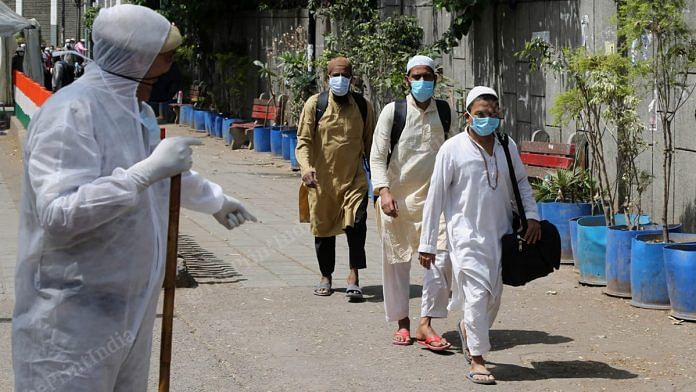
New Delhi: The deliberations on the Tablighi Jamaat incident continued on prime time Thursday, peppered with other coronavirus-related news.
Zee News’ Mimansa Malik exclaimed that the whole country was now worried because of the Nizamuddin Markaz while Aaj Tak’s Rohit Sardana focused on visuals from inside the Jamaat. On India Today, Rajdeep Sardesai dwelt on what the first positive coronavirus casualty in Asia’s largest slum Dharavi meant for the city of Mumbai, while NDTV 24×7 had an exclusive story about alleged eye-brow raising delays in ordering protective gear for doctors and medical staff.
On Zee News’ ‘Taal Thok Ke’, the drama began even before the debate started. Anchor Mimansa Malik introduced her panel for the evening and went over to Kerala Governor Arif Mohammad Khan first. Khan, however, was busy telling the crew in the background that he was not interested in being part of the panel discussion and would rather just speak for the first 10-15 minutes and be done with it.
A rather embarrassed Malik cut Arif’s audio and video, claiming technical difficulties, and then went to her next panelist — political commentator Shehzad Poonawalla. “Is the Tablighi Jaamat above the law?” she enquired. He calmly replied that increasingly in the country there is a sense that religion is above the country and politics is above governance. This was the same thought process with which the Jamaat was operating, he claimed, adding that according to him, atleast 15-20 per cent spike in Covid-19 cases nationwide could be attributed to the Jamaat.
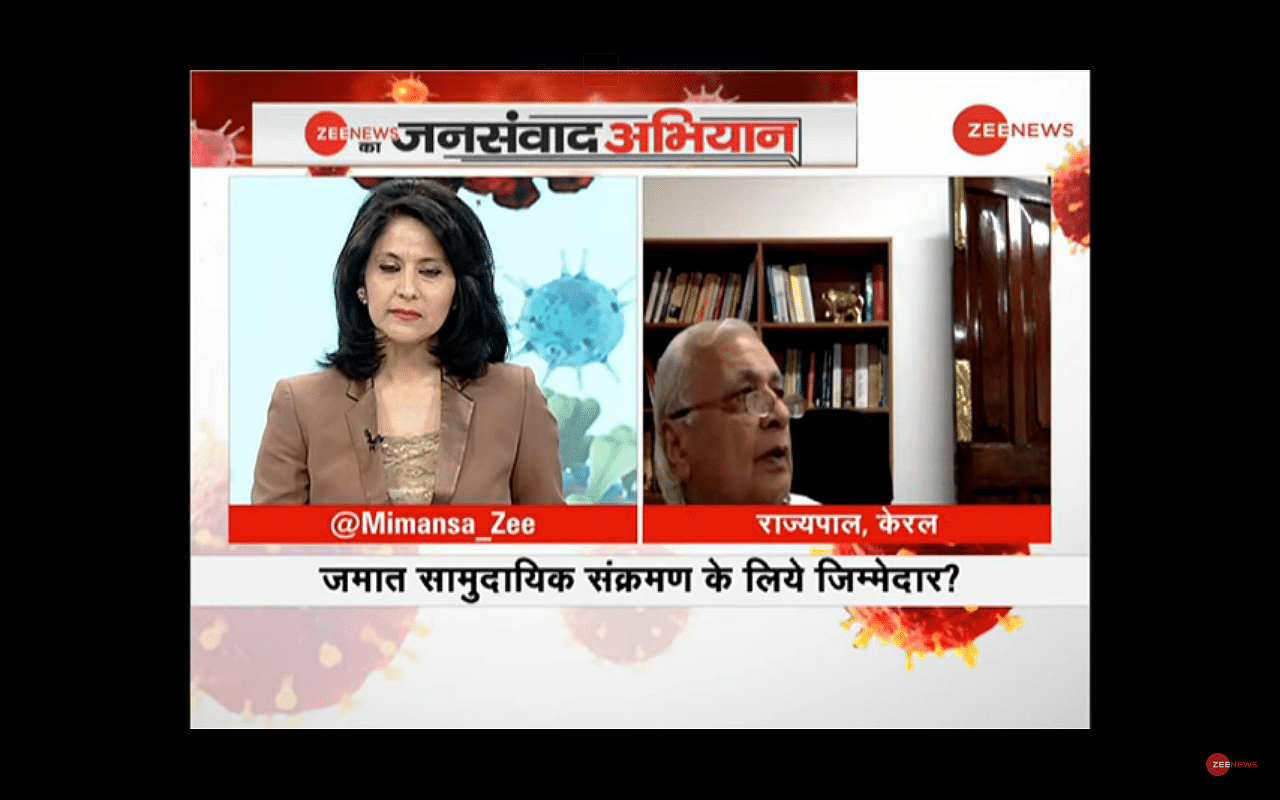
Aaj Tak’s ‘Dangal with Rohit Sardana’ also focused on the Jamaat, with Sardana zooming in on visuals obtained from inside the congregation hall where no one was practicing social distancing. He then played a “viral” clip of an alleged speech by Jamaat chief Maulana Saad, in which Saad questioned why masjids were being shut down.
Jamaat supporter Bilal Khan chimed into the conversation, asking why only Nizammudin was being targeted when just a few days ago there were tens of thousands of people crowding Anand Vihar’s bus station?
Sardana patiently waited for him to finish and then said, “Corona ko corona ke jaise dekhiya, bimaari ko dharam ke chasme se nahi dekhiye”. (Look at corona like corona, don’t look at the disease through the lense of religion)
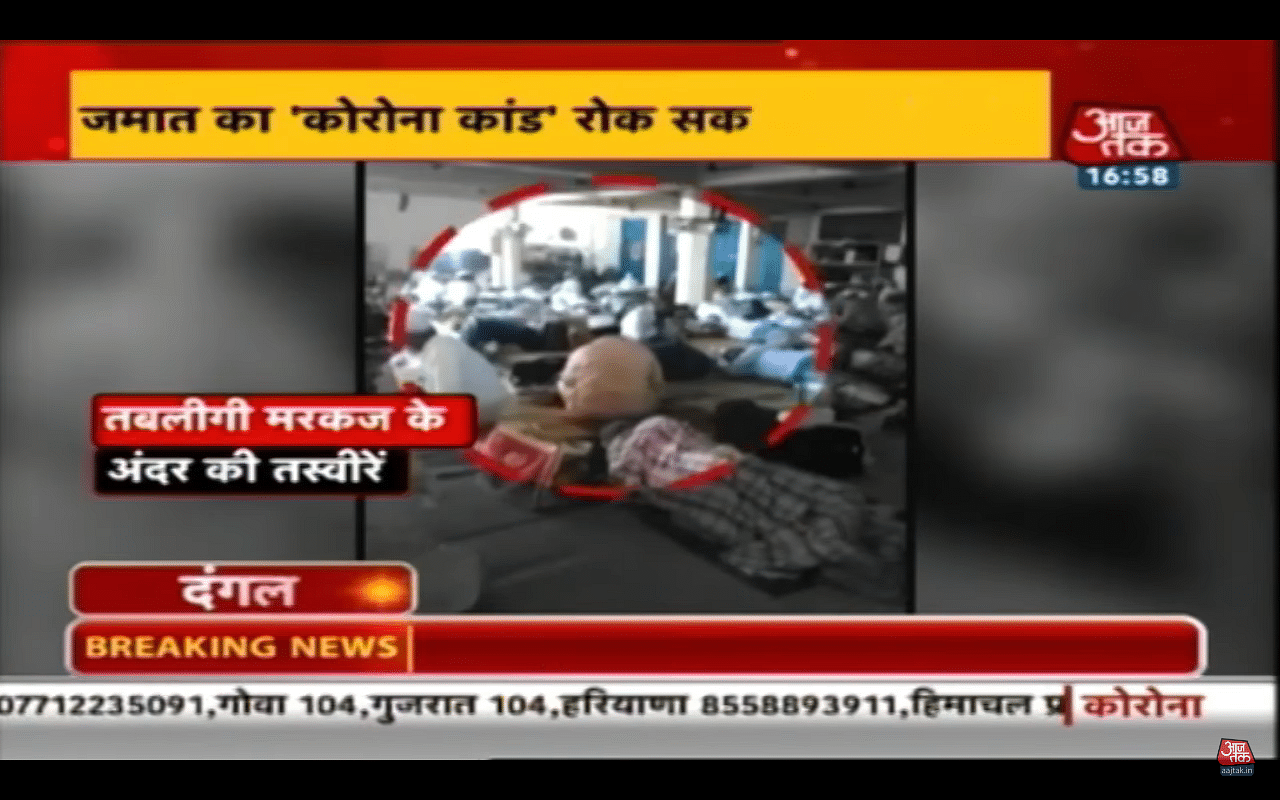
CNN News 18 host Anand Narasimhan, however, wasn’t so patient. Demanding immediate answers, he asked BJP leader and advocate Nalin Kohli why the people of the Jamaat were given “such a long rope” and allowed to assemble, even before the lockdown, on the 15-18 of March?
“Why didn’t intelligence flag and seal the operation?” he asked.
“May I answer? May I answer?,” Kohli repeatedly asked, waiting for Narasimhan’s outrage to simmer down. “In this country there are vested interest groups that would have immediately jumped on this and claimed we are interfering in religious activity,” he answered.
“The Constitution is not only about rights, it’s also about fundamental duties,” he said, pointing at how the Jamaat’s people should have acted responsibly.
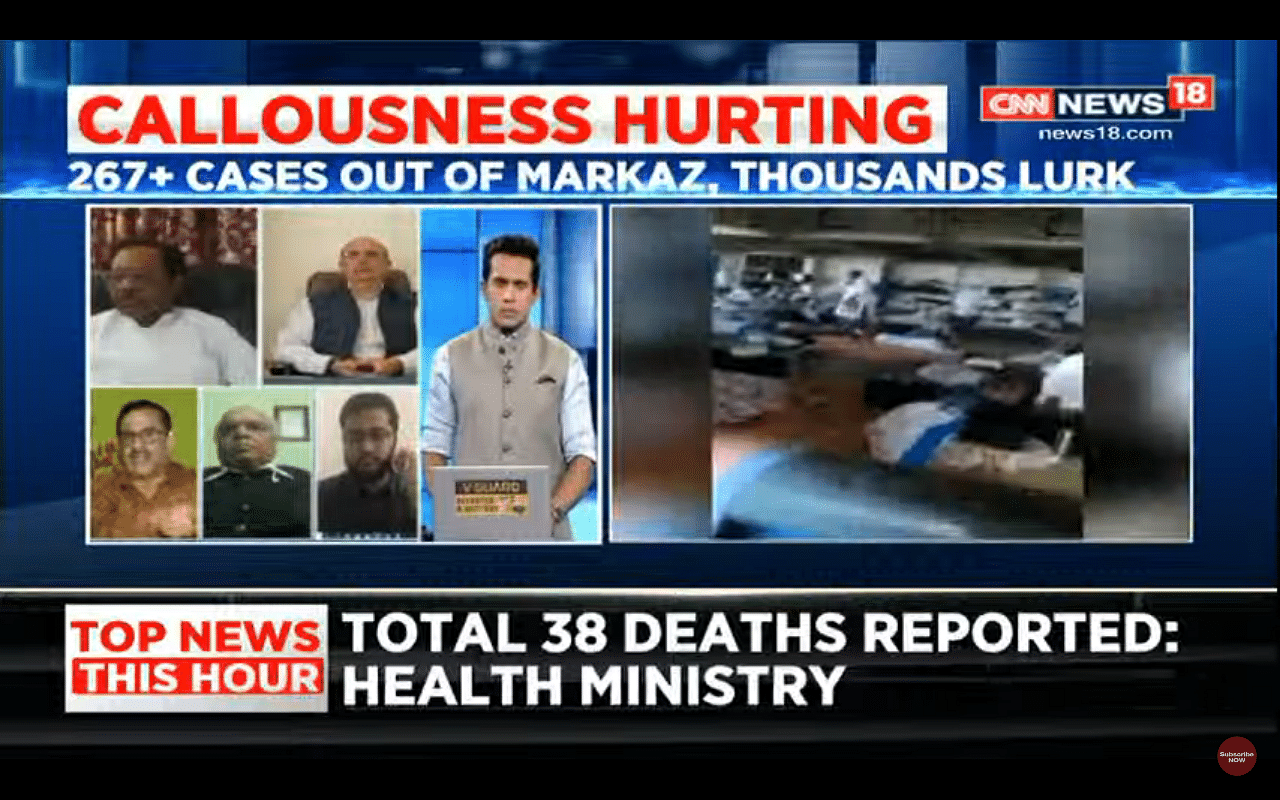
India Today’s Rajdeep Sardesai was more interested in a new coronavirus casualty, a 56-year-old man from Dharavi — the largest slum in Asia.
Speaking to Maharashtra Health Minister Rajesh Tope, Sardesai asked how worrying this case was for the cause of community spread in Mumbai.
Tope said that the government’s efforts till now have been to contain Covid-19 in the “classes”, and not let it enter the “masses”. He agreed that it was a real matter of concern to have a patient come from a congested area like Dharavi, but gave assurances that all high-risk contacts of the patient were being tracked, and the man’s building was being sealed.
He explained that the Maharashtra government followed the principle of three Ts — tracing, testing, treatment. Sardesai was not so convinced, “Maharashtra’s numbers are better than other states in terms of testing, but it still has a high number of positive cases”.
He questioned how the government was tracking people in a crowded busy city like Mumbai. Again, Tope was most reassuring and said that with 3,000 medical workers and officers and another 1,000 supervisory staff, a combined total of 4,000 people were dedicated to just tracking high risk contacts day and night.
NDTV 24×7 featured an exclusive report on Personal Protective Equipment (PPEs) by Sreenivasan Jain and Arvind Gunasekar. Jain explained how doctors have been constantly protesting the lack of safety gear like masks and hazmat suits, and have even resorted to sometimes wearing motorcycle helmets and raincoats when on duty.
He said there was a shortage of personal safety gear across the world, but explained that their investigation revealed a specific problem in India. “It appears that the government has dramatically delayed placing orders for safety wear from Indian companies as late as March 24 — the day India went into a three-week lockdown,” he announced.
According to their findings, a bulk of orders were placed just a day before the lockdown was announced, and some on the day — “Very, very late in the day to start placing orders”.
Gunasekar explained that despite these late orders, the government chose suppliers who are extremely small-scale and who do not have the capacity to meet the urgent demand. Listing the 12 different companies chosen, Gunasekar said that companies that were from Noida and Gurgaon only had the capacity to produce about 300-500 PPEs a day, while one company was not able to produce more than 100 a day, which is much lower than the demand.
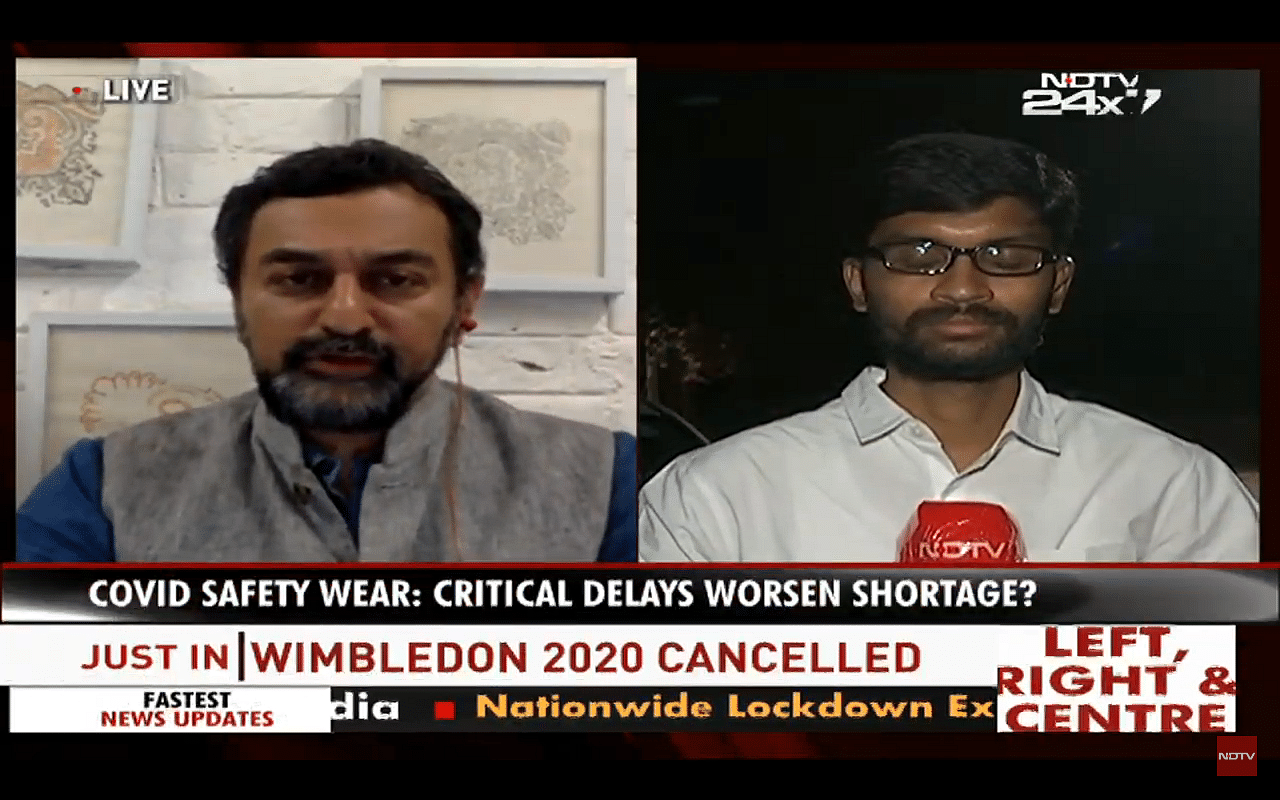

Finding of Jamat must be investigated. There seems to be a deliberate attempt to spread Covid19 throughout the country. That’s why they waited till they were sure that Jamat people were infested. Once sure they were told to move out and spread it. Virus Jihad.
Saw Dust Heads Question Crowd At Bus Stops Which Was Spontaneous With People Escaping From City To Their Natives.Jamat Was A Well Designed Sabotage At Spreading The Virus.Working Against The Country.